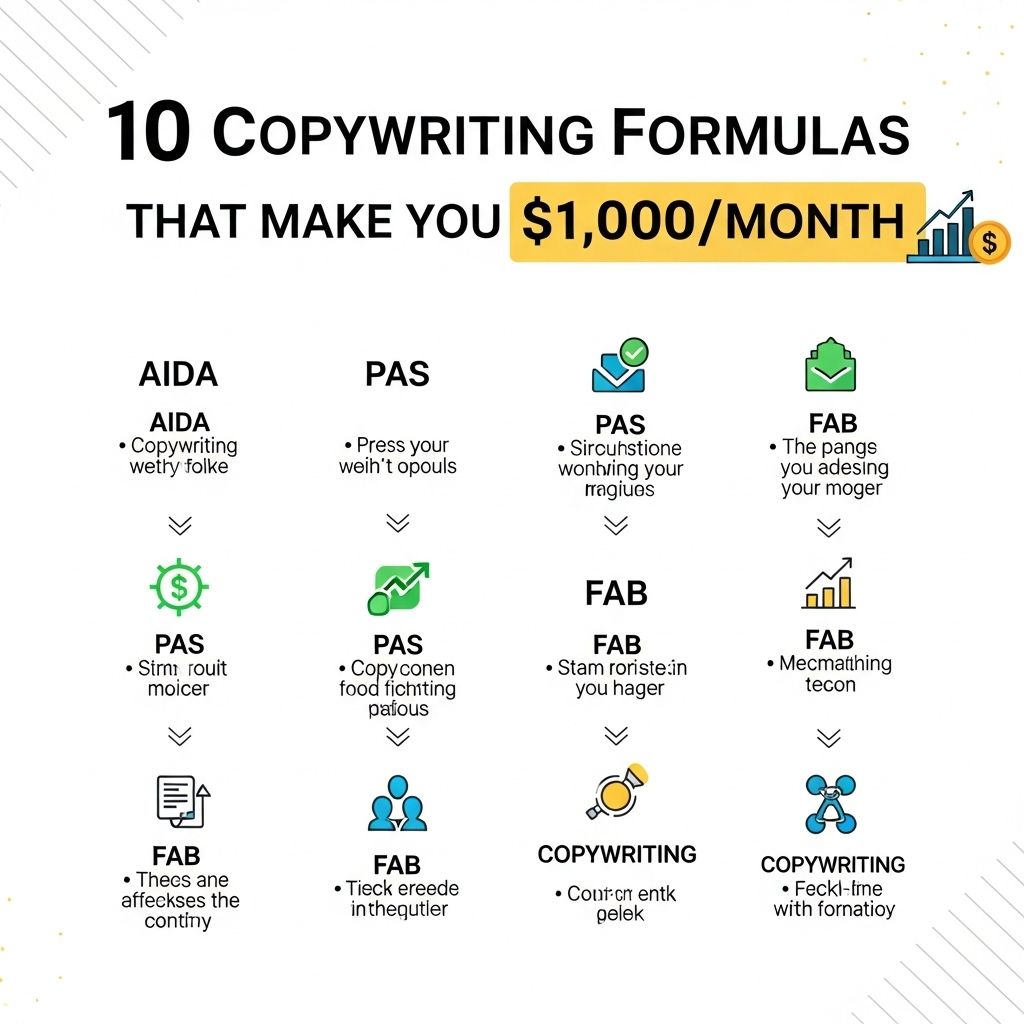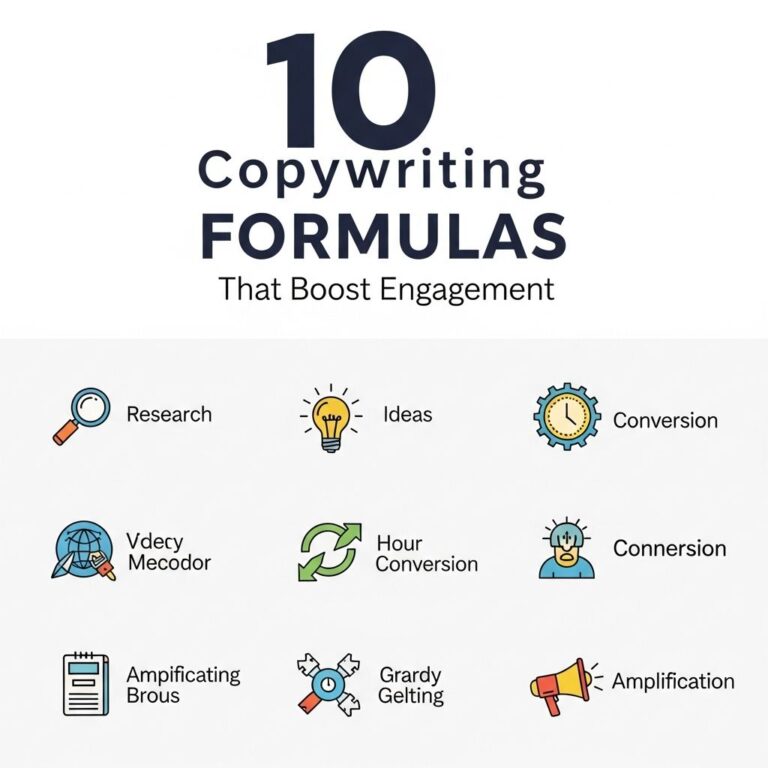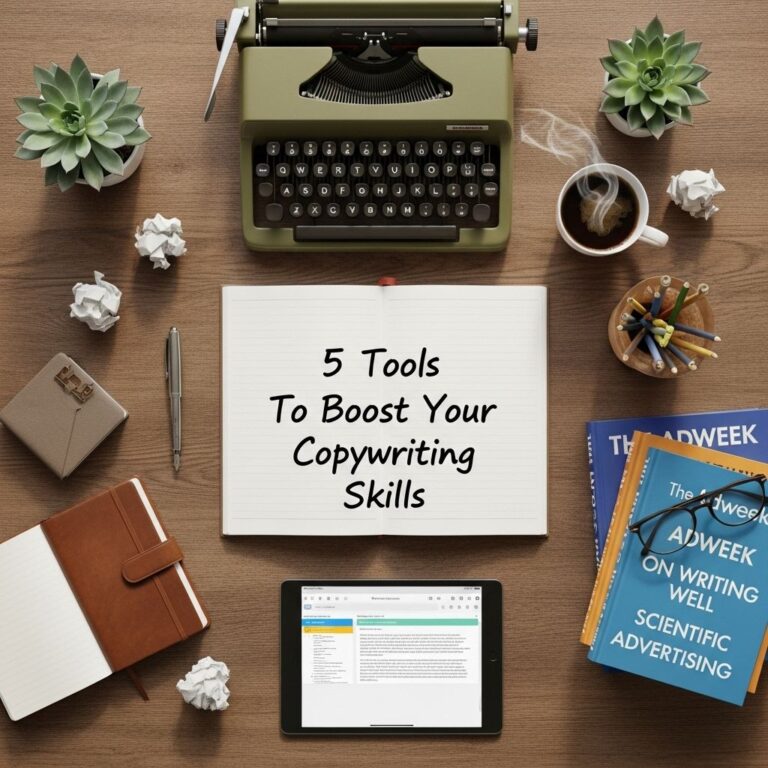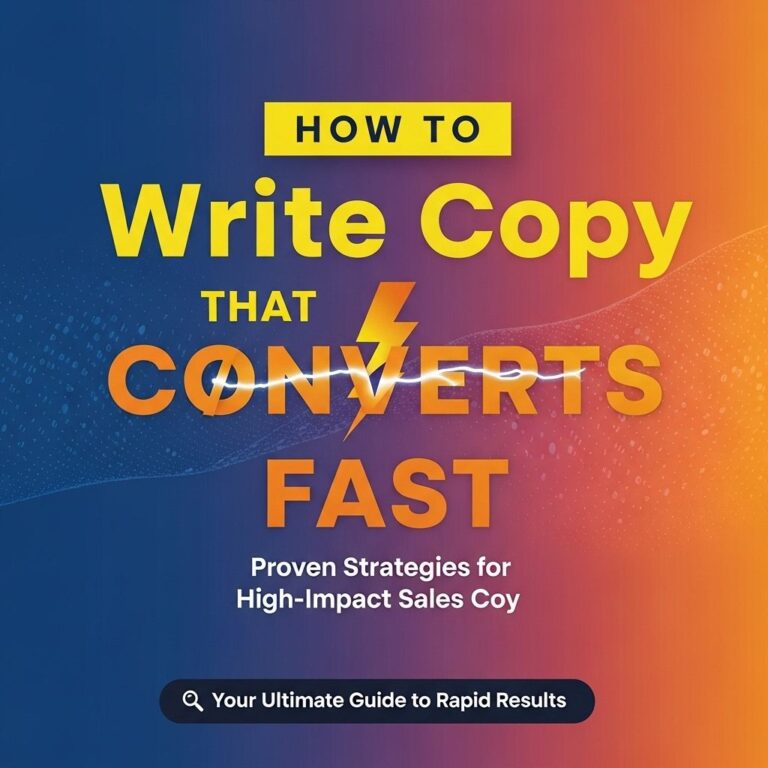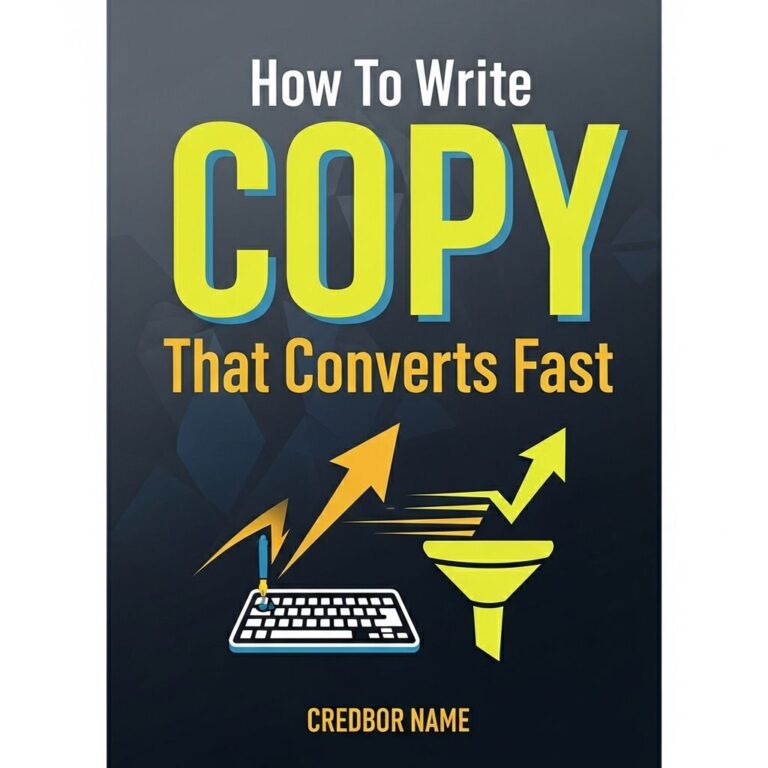In the competitive world of copywriting, having the right formula can make all the difference between mediocre and outstanding copy. Whether you’re crafting a landing page, email campaigns, or social media posts, leveraging proven copywriting formulas can help you connect with your audience, motivate them to take action, and ultimately boost your income. This article delves into ten effective copywriting formulas that can potentially help you earn $1,000 a month—or more if executed skillfully.
Table of Contents
AIDA: Attention, Interest, Desire, Action
The AIDA formula is a classic model in marketing and copywriting that stands the test of time. It breaks down into four essential components:
- Attention: Grab the reader’s attention with a captivating headline or opening line.
- Interest: Build interest by providing compelling information that resonates with the audience.
- Desire: Create a desire for the product or service by highlighting benefits and addressing pain points.
- Action: End with a strong call-to-action (CTA) that encourages the reader to take the next step.
Example: A landing page for a weight loss program might start with a powerful statistic (Attention), followed by testimonials (Interest), descriptions of the life-changing benefits (Desire), and a clear button to sign up (Action).
Problem-Agitate-Solution (PAS)
This formula is all about addressing a problem that your target audience faces, amplifying the urgency or frustration related to that problem, and then offering your product or service as the solution.
- Problem: Identify a specific pain point.
- Agitate: Make the reader feel the weight of the problem. This is where emotional triggers come into play.
- Solution: Present your offering as the perfect solution to their dilemma.
Example: If writing for a software that helps manage time effectively, you might start with the chaos caused by poor time management (Problem), discuss the stress it brings (Agitate), and then introduce your software (Solution).
Feature-Advantage-Benefit (FAB)
When creating effective copy, it’s essential to differentiate between features, advantages, and benefits. This formula helps clarify how your offering stands out.
- Feature: Describe a key feature of your product.
- Advantage: Explain what this feature does.
- Benefit: Articulate how it makes the user’s life better.
Example: A smartphone might have a high-resolution camera (Feature), which allows for stunning photography (Advantage), leading to capturing memories beautifully (Benefit).
Before-After-Bridge (BAB)
This formula paints a picture for your audience by showing them their current situation, contrasting it with a better future state, and then bridging the gap with your product or service.
- Before: Describe their current experience or problem.
- After: Paint a vivid picture of what their life could look like.
- Bridge: Explain how your product can help them achieve that better state.
Example: In a copy for a personal finance app, you could highlight the confusion of managing finances (Before), the clarity and confidence that comes from organized finances (After), and how your app brings that clarity (Bridge).
Star-Story-Solution
This narrative-driven formula uses storytelling to engage the audience. It works well for brands looking to create a relatable persona or emotional connection.
- Star: Introduce a relatable character or “star” of the story.
- Story: Describe the challenges this character faces.
- Solution: Show how your product or service resolves these challenges.
Example: A case study highlighting a customer (Star) who struggled to achieve their fitness goals (Story) until they found your program (Solution).
4C’s: Clear, Concise, Compelling, Credible
This formula focuses on the qualities that make copy effective:
- Clear: Avoid jargon and ensure your message is easily understood.
- Concise: Keep sentences short and to the point.
- Compelling: Use persuasive language to entice the reader.
- Credible: Include testimonials or data to back up your claims.
Example: An email campaign showcasing positive customer reviews can exemplify all four C’s effectively.
G.R.A.B: Grabbing attention, Relating, Asking, and Building
The G.R.A.B formula emphasizes building rapport with the audience through a sequence of strategic actions:
- Grabbing attention: Use a bold statement or question.
- Relating: Connect with readers by addressing their feelings and experiences.
- Asking: Pose a question that leads them to consider a change.
- Building: Construct a narrative that supports your message.
Example: A blog post on mental health might start with a shocking statistic (Grabbing attention), discuss the struggles many face (Relating), ask if they’ve experienced similar issues (Asking), and then offer insights or solutions (Building).
Headline-Body-Call to Action (HBCA)
This straightforward formula is essential for structuring effective advertisements and web content.
- Headline: Craft a compelling headline that draws readers in.
- Body: Provide informative and persuasive body content that holds their interest.
- Call to Action: Include a clear directive for the reader on what to do next.
Example: An ad for an online course might use a catchy headline, detailed descriptions of course benefits, and a button to sign up.
Social Proof and Urgency
Combining social proof with urgency can be a dynamic way to drive conversions. This formula encourages prospects to take action based on the behavior of others and a prevailing sense of urgency.
- Social Proof: Showcase testimonials, user reviews, or statistics.
- Urgency: Create a sense of immediate need with limited-time offers or scarcity.
Example: “Join 1,000+ satisfied customers! Limited time offer: sign up by midnight!”
Conclusion
Mastering these copywriting formulas can significantly improve your content’s effectiveness, helping you to engage your audience and drive conversions. As you experiment with these different approaches, keep in mind the importance of understanding your target audience’s needs and preferences. Test, analyze, and iterate on your copy to find what works best for your specific market. With consistency and dedication, using these formulas effectively could set you on a path toward achieving that $1,000/month milestone and beyond.
FAQ
What are some effective copywriting formulas?
Some effective copywriting formulas include AIDA (Attention, Interest, Desire, Action), PAS (Problem, Agitation, Solution), and FAB (Features, Advantages, Benefits).
How can I use copywriting to increase my income?
By mastering copywriting techniques, you can create compelling content that drives sales, improves conversion rates, and ultimately increases your monthly earnings.
What is the AIDA formula in copywriting?
The AIDA formula stands for Attention, Interest, Desire, and Action, and is a classic model used to guide the creation of persuasive marketing messages.
How do I choose the right copywriting formula for my project?
Choosing the right copywriting formula depends on your audience, the product or service you’re promoting, and the specific goals of your marketing campaign.
Can copywriting formulas be adapted for different industries?
Yes, copywriting formulas can be tailored to fit various industries by adjusting the messaging to resonate with the target audience’s needs and preferences.
What skills do I need to succeed in copywriting?
To succeed in copywriting, you need strong writing skills, a good understanding of marketing principles, creativity, and the ability to analyze and understand your audience.

